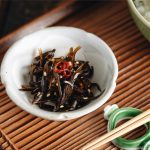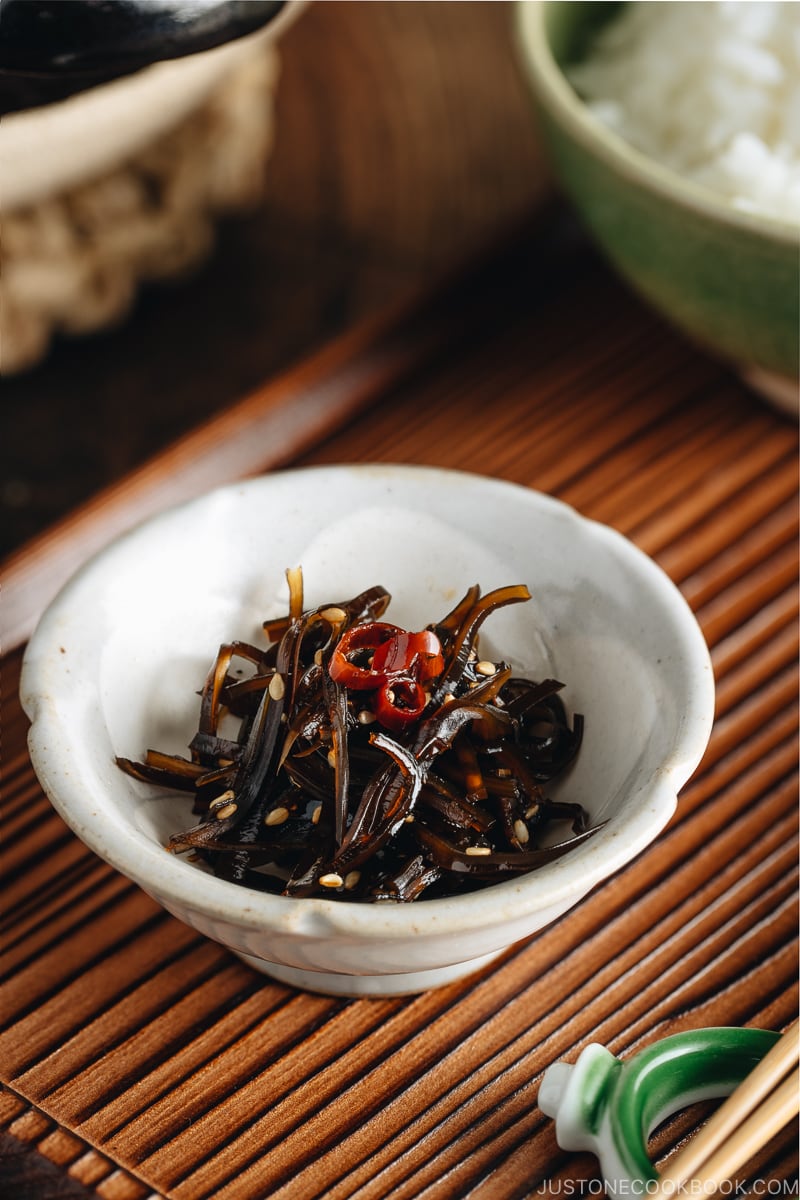
Wondering what to do with leftover kombu from your Japanese recipes? Make delicious simmered Kombu Tsukudani cooked in a sweet and savory sauce. My tender seasoned kelp recipe is an easy and tasty side dish for your plain steamed rice or onigiri!

Once you start making Japanese dishes, you will realize you are left with a lot of used kombu from making homemade dashi (Japanese soup stock), mentsuyu (noodle soup base), or ponzu sauce. You may wonder what to do with the spent kombu.
Don’t throw those leftover kombu pieces away! You can repurpose them into a delicious simmered kombu dish called Kombu Tsukudani. Follow my recipe and tips below to make this easy and tasty side dish.
Tsukudani (佃煮) is a preparation where an ingredient is simmered for a long time in a sweet and savory sauce (typically made from soy sauce, sugar, and mirin). It usually has an intensely sweet and savory flavor, which helps preserve the ingredients.
Because of the strong flavor, tsukudani has been served as a side dish to accompany plain steamed rice since the Edo period (1600s–1800s). We call it gohan no okazu (ご飯のおかず), or rice side dish, as it’s eaten with steamed rice as a flavoring agent.
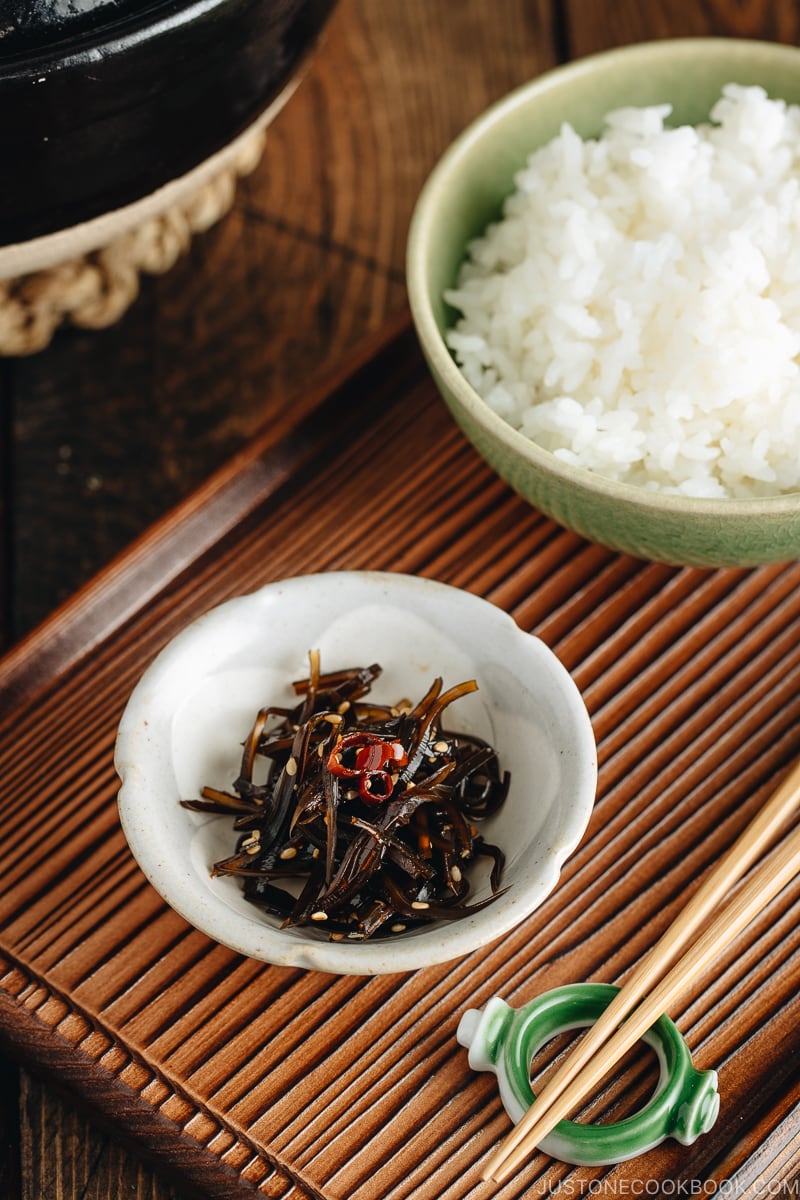
Kombu tsukudani (昆布の佃煮) is one of the most common types and it’s an excellent way to use up all your spent kombu. Other typical ingredients to make into tsukudani are seafood/fish (like baby sardines), shellfish, meat, seaweed, and vegetables.
Kombu tsukudani keeps for up to 2 weeks in the fridge, so it’s a great dish to make ahead and keep on hand. Tsukudani is always served and eaten chilled from the refrigerator and is not cooked again prior to eating.
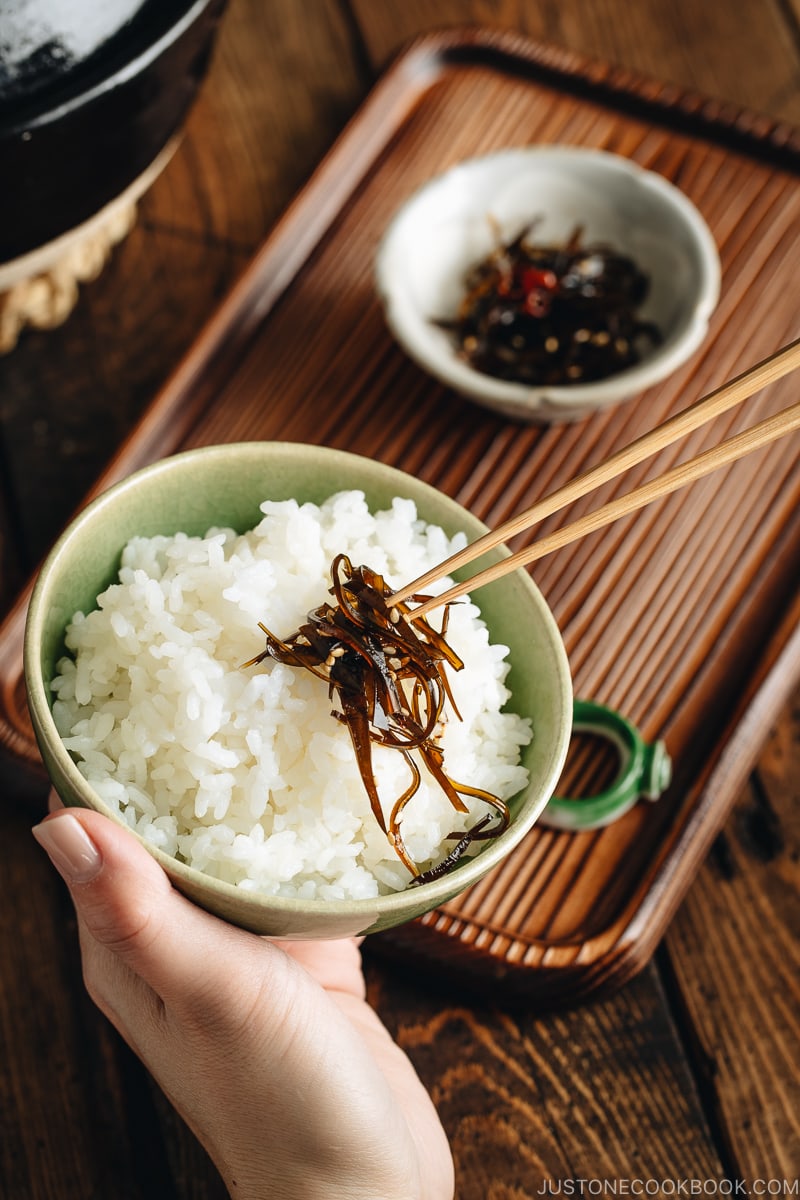
For the best texture, hidaka kombu (日高昆布) is the most suitable choice for tsukudani. It gets tender a lot faster than other types. Ma kombu and rishiri kombu are thick and hard to cook.
Do you know which type of kombu are you using? If not, check out my kombu post where I discuss the different types.
If you use different types of kombu in your cooking like I do, I recommend freezing the spent kombu separately based on variety. Then you can cook it according to kombu type for a consistent result.
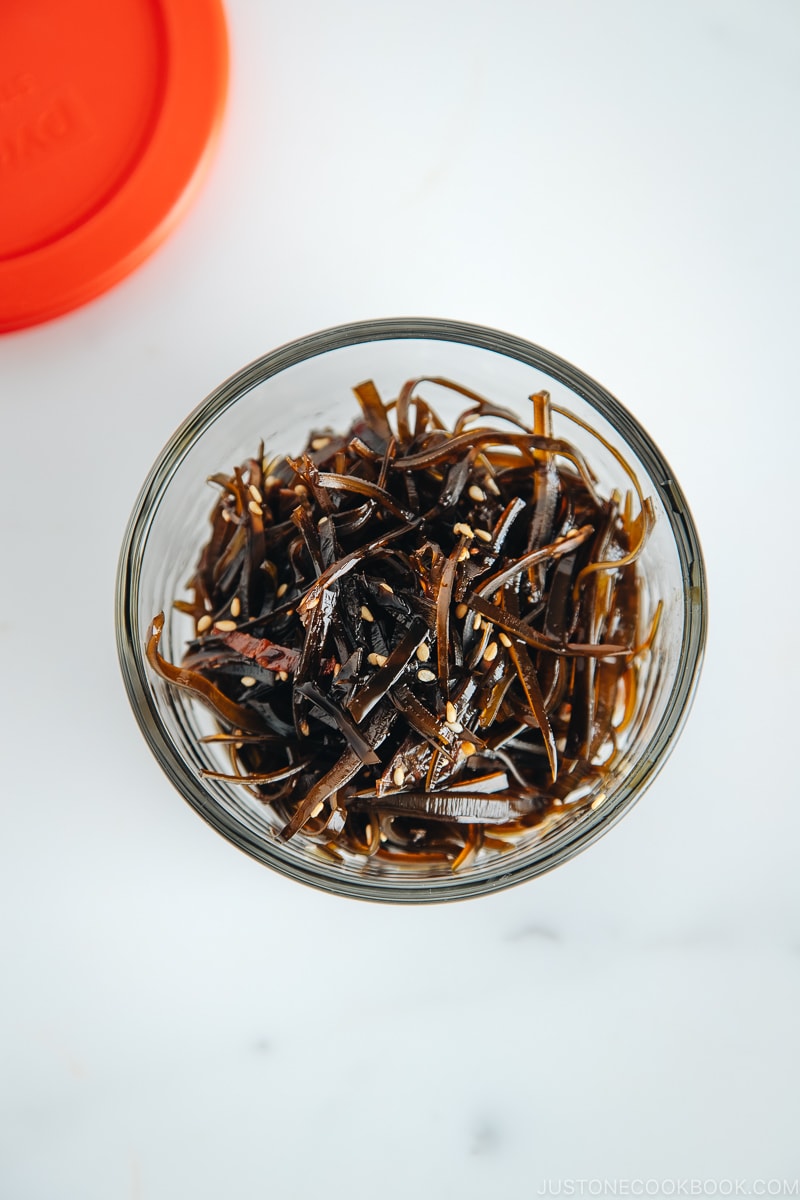
You can store the leftovers in a jar or other airtight container in the fridge for up to 2 weeks. Serve it chilled.
Here are my tips for making delicious, tender kombu tsukudani:
If you plan to make kombu tsukudani, pick a tender variety of kombu like hidaka kombu. But sometimes you just have to use whatever kombu you have. In that case, try my next tip #2.
In Japan, kombu is often cooked with a little bit of rice vinegar, which tenderizes the kombu. Don’t add too much though. You don’t want the tsukudani to taste vinegary.
If the kombu hasn’t turned tender after simmering for 20–25 minutes, add some water and continue to simmer until it gets to the right texture.
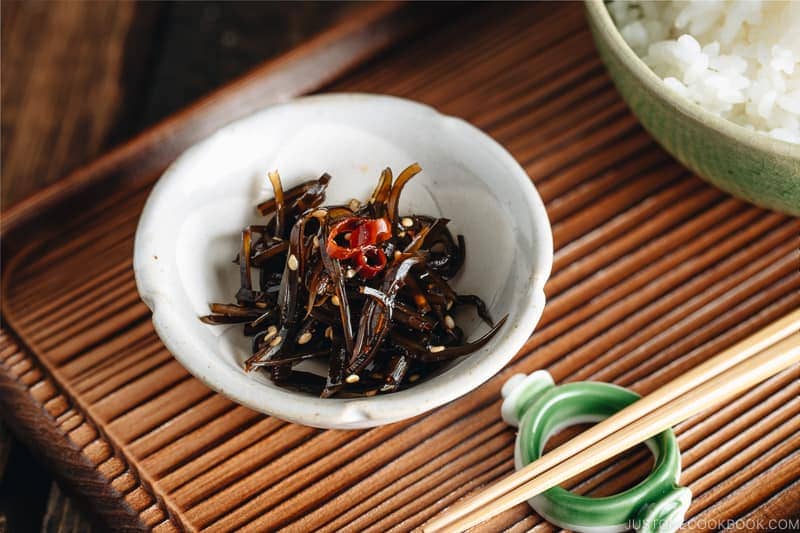
Wish to learn more about Japanese cooking? Sign up for our free newsletter to receive cooking tips & recipe updates! And stay in touch with me on Facebook, Pinterest, YouTube, and Instagram.
